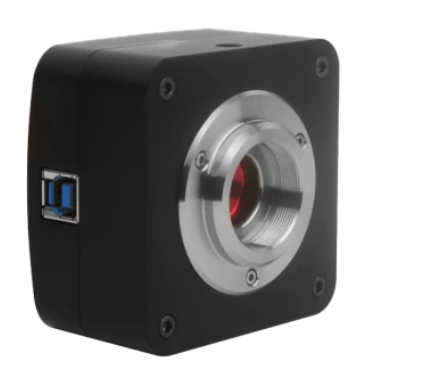When it comes to capturing and analyzing images at the microscopic level, it is essential to employ the appropriate apparatus for the respective application. When it comes to selecting a digital camera and microscope, this guide will assist you in understanding the most important considerations to take into account. We will discuss the various kinds of microscopes and cameras that are available, as well as the ways in which you can tailor them to meet the requirements of your research or teaching. Various Category of Digital Camera For Microscope. Sensor Types Used in Digital CamerasDifferent Specifications of the CameraUtilizing Microscopes to Complement CamerasThe Available Software and User InterfacesTaking into Account the BudgetTools and Assistance Provided by Vendors

Digital Cameras Available for Use with MicroscopesIn order to view biological specimens such as cells and tissues, biological microscopes are designed specifically for this purpose
1. They come equipped with features such as a mechanical stage and brightfield illumination, and they provide a high magnification range that goes from 40x to 1500x
2. When examining large three-dimensional samples, such as insects or circuit boards, stereo microscopes, which are also sometimes referred to as zoom microscopes, are utilized
3. With zoom lenses, they offer a magnification range from 10x to 90x, which is considered to be low to intermediate
4. Metallurgical microscopes are more robust in construction and come equipped with specialized features that allow them to analyze metals and other materials
5. The use of polarizing filters and highly developed illumination is widespread
6. Sensor types for digital cameras designed for microscopesMicroscopy was initially dominated by charge-coupled device (CCD) sensors; however, CMOS sensors have made significant advancements in recent years
7. CMOS sensors, which stand for complementary metal-oxide-semiconductor, are becoming increasingly popular as a result of their lower cost and their capacity to record high-definition video
8. More sensitive to light and better image quality are provided by larger sensor chips, such as 1/1
9. 8 inches, in comparison to smaller sensors, such as 1/2 inches
Different Specifications of the CameraImage detail level is affected by resolution, which can be measured in megapixels (MP) or total pixel count. In the case of live viewing, speed is measured in frames per second (FPS), while for video it is measured in images per second. The type of focus, such as manual or autofocus, has an effect on usability. Connectivity options are determined by means of interfaces such as USB, HDMI, and Wi-Fi. Utilizing Microscopes to Complement CamerasA specialized port is available on trinocular microscopes, which allows for the attachment of cameras that have threading or adapters. Aftermarket eyepiece tubes or complete replacement tubes that include a camera insert are required for binocular models from the manufacturer. The camera attachment on zoom stereo microscopes may be accomplished through the use of a C-mount or other adapter fittings. The Available Software and User InterfacesImages can be captured, measurements can be taken, and annotations can be made for documentation and sharing purposes with the help of measurement and analysis software. While USB connections to personal computers are quite common, HDMI outputs enable users to view content at full resolution on larger monitors without the need for a computer.
Wireless options such as Wi-Fi make it possible to view your microscope while untethered on mobile devices such as tablets or phones. Taking into Account the Budget. Beginning Digital Camera For Microscope kits with basic cameras can be purchased for anywhere between $500 and $1,000, depending on the magnification and features of the microscope. Research microscopy that is of a higher quality and incorporates sophisticated cameras and software can cost more than $10,000 for a fully integrated system. When developing a budget, it is best to take into consideration your particular application and expansion options. Tools and Assistance Provided by VendorsOn their websites, reputable microscope manufacturers offer application guidance, demonstration videos, and installation guides for their products. The best microscope-camera solutions can be recommended to you by equipment representatives after they have evaluated your workflow and requirements. You will have peace of mind when dealing with complex systems if you have access to ongoing support in the form of manuals, tutorials, and service plans.
